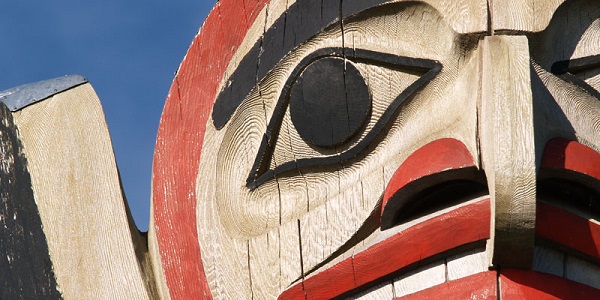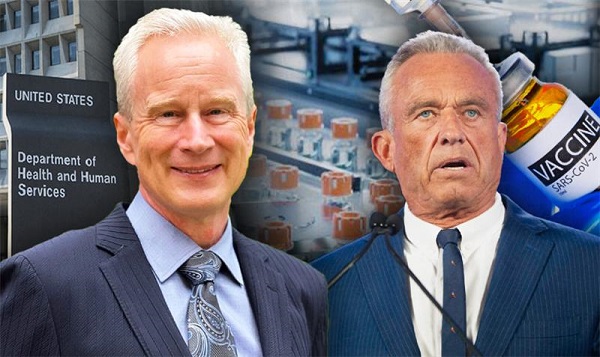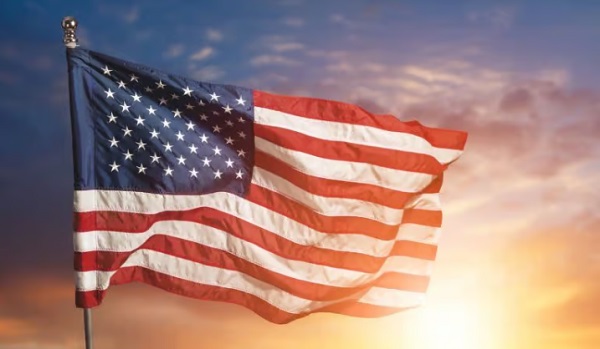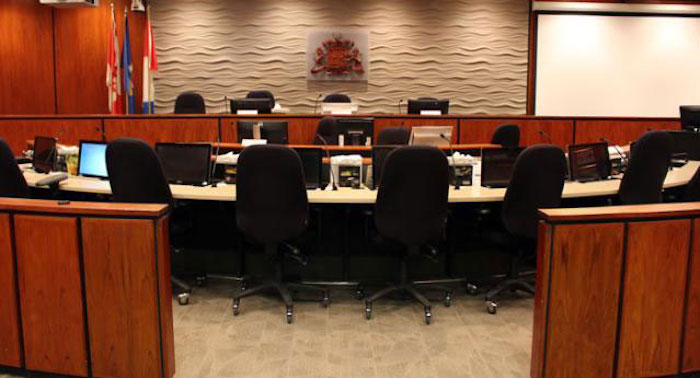Indigenous
Canada’s Indigenous Model is Not Sustainable

From the Frontier Centre for Public Policy
The stated purpose of the extra indigenous spending that has always been there, and the virtual explosion on indigenous spending since 2015 is meant to fix that problem. But these massive expenditures have now reached the point where they risk destabilizing the country.
Canada’s parliamentary budget officer, Yves Giroux has spoken out about the alarming rise in Canada’s contingent liabilities related to indigenous claims. Todays estimated 76 billion dollars is many times the 15 billion dollars it was when the Liberals took power in 2015.
This is one part only of the massive increase in spending on indigenous matters that has taken place since then.
Federal spending per indigenous person has always been much higher than spending per non-indigenous person. The higher level of spending has been justified because most indigenous people do much worse on virtually every health and social indicator than the mainstream population. Their health is poorer, and their lives are shorter.
This disparity was generally known as Canada’s “Indian problem”. That term is no longer fashionable, and the extra spending is now said to be necessary to achieve “reconciliation”. Regardless of the terms, what is clear is that since Confederation there has always existed a large rural and urban indigenous underclass that does poorly compared to the mainstream. The stated purpose of the extra indigenous spending that has always been there, and the virtual explosion on indigenous spending since 2015 is meant to fix that problem. But these massive expenditures have now reached the point where they risk destabilizing the country.
Perhaps it’s time for Canadians to ask if the “nation to nation” reconciliation plan that spending is based on is working. Is it fixing the problem?
A recent CBC report proves that it is not. Instead, the problems are getting worse.
The CBC investigated an indigenous community at St. Theresa Point where 24 people sometime share one house. Almost all of the houses in the community are crumbling and need to be replaced. Families struggle to achieve basic hygiene. Living conditions resemble what one would expect to find in a third world community, and not in wealthy, modern Canada.
St. Theresa Point is typical of hundreds of other Indian remote reserves. Most are almost totally dependent on the federal government for their survival. There is virtually no real employment. The poorest people in those communities are directly dependent on welfare checks, but even the chief, councillors and other employees receive their paycheques from the transfer payments sent by Ottawa. In reality almost everyone in the community is on welfare of some type.
Unlike in other rural communities, people on poor reserves tend not to move when economic opportunities decline. In small-town Canada, the rules are simple: If the towns or farms can’t supply enough jobs, one moves to the city where the jobs and careers are. But on remote reserves, most people stay put, even if there are no jobs or careers there for them. And most of those who do move to the city do not do well. A lack of education, poor job skills, and lack of motivation usually consign reserve residents who move to the mean parts of town where many end up in gangs, crime and prostitution. The result is that the people who stay in uneconomic remote reserves become more and more dependent. Low education levels sink even further. And succeeding generations become ever less likely to be able to provide for themselves and their families.
To make matters much worse, addiction problems are endemic. At one time, alcohol was the drug of choice. Now, amphetamines, fentanyl, and prescription drugs have been added to the list, with the family violence, sexual abuse, crime, teenage pregnancy and fetal alcohol births that inevitably follow from chronic drug use.
And reserve populations are growing. Although status Indians living on reserves currently comprise only about 1% of the total population, they are the country’s fastest growing demographic. The cost of operating these communities is crippling now, but in a few years, it will be completely unsustainable. Pretending that these desperately poor reserves are sovereign “nations” that will somehow magically become prosperous and self-supporting is a cruel joke on the young people hopelessly trapped on them. The prospect of hundreds of dependent reserves teeming with, unemployed, and largely unemployable young people, with massive social problems, is a frightening dystopia – hundreds of Gaza strips. But it is where we are headed. To make things even worse, the government-promoted false genocide and “missing children” narratives have made many of these people very angry.
Although there is no treaty right, or any other right to free housing on a reserve the reality is that if the government did not provide housing for the reserve residents, they would be unable to provide housing for themselves. The strange result is that Canadian taxpayers – many of whom will never be able to afford to buy a house themselves – pay through their tax dollars for houses for the rapidly growing reserve population. These houses deteriorate quickly, because they are considered “free” by the residents, and have to be fixed and replaced in a wasteful and expensive cycle.
And it is a national disgrace that most reserves are dead ends for most of the young people born into them.
The late Farley Mowat described northern indigenous settlements as “unguarded concentration camps”. That might be a somewhat harsh way to describe reserves, but at best most are human warehouses, plagued with social problems. The young people living there deserve some hope, and Canada’s current plan for them offers them none.
So, Canada’s current indigenous plan is clearly not working. Is there a better plan for success?
Maybe we should ask Wab Kinew, Manitoba’s new premier. He is indigenous and highly successful. How did he get there?
The formula is actually not complicated. It has nothing to do with massive welfare giveaways, “nation to nation” utopias, or incredibly expensive “reconciliation” projects. It definitely has nothing to do with staying in a community that lacks economic opportunities, and waiting for handouts. It involves education, hard work, and going where the jobs are. Kinew’s parents realized that a stable home and education were key. Wab did the rest. He worked his way up the ladder in the usual way, and went where the jobs were. He did that with his indigenous identity intact.
Not every young person has Kinew’s talent, but everyone can follow the formula that made Kinew, and many other indigenous achievers successful.
The alternative – spending ever increasing amounts on a steadily increasing list of demands from a growing dependent reserve population is not an option. We don’t need the parliamentary budget officer to tell us that it is not sustainable.
As for remote, uneconomic reserves, like St. Theresa Point, they should be gradually and humanely closed down. It has been recognized for many years that reserves long ago had served their purpose, and should be phased out. As far back as 1911, it was said:
“Department officials were increasingly coming to the view that reserves had outlived their usefulness. Frank Pedley suggested that they resulted in the isolation and segregation of Indians, and thereby hindered progress…and encouraged the tribal form of government.”
The reserve system was not ended in 1911 because the chiefs and ruling families refused to give up their privileged positions. It isn’t happening today for the same reasons. We still have the same Indian Act and reserve system that has held indigenous people back for almost 150 years. (Senior Ontario lawyer, Peter Best, describes the toxicity of the reserve system in his important book, There Is No Difference)
So, the long-term plan should be to find a way to overcome that resistance, and find a fair way to phase out reserves, and the antiquated Indian Act. The reserves that are economically viable can merge into existing rural municipalities, or become stand-alone municipalities. Opportunities should be made available for young people from uneconomic communities to move to job centres, and receive help to succeed there.
In the meantime, the example of Wab Kinew is proof that there has never been a better time or place than today’s Canada to be an educated and ambitious young indigenous person who is willing to study, work hard, and go where the jobs are.
Brian Giesbrecht is a retired judge and senior fellow at Frontier Centre for Public Policy
Watch Brian on Return to Reason here.
Business
Ottawa’s avalanche of spending hasn’t helped First Nations

From the Fraser Institute
By Tom Flanagan
When Justin Trudeau came to power in 2015, he memorably said that the welfare of Indigenous Canadians was his highest priority. He certainly has delivered on his promise, at least in terms of shovelling out money.
During his 10 years in office, budgeted Indigenous spending has approximately tripled, from about $11 billion to almost $33 billion. Prime Minister Trudeau’s instruction to the Department of Justice to negotiate rather than litigate class actions has resulted in paying tens of billions of dollars to Indigenous claimants over alleged wrongs in education and other social services. And his government has settled specific claims—alleged violations of treaty terms or of the Indian Act—at four times the previous rate, resulting in the award of at least an additional $10 billion to First Nations government.
But has this avalanche of money really helped First Nations people living on reserves, who are the poorest segment of Canadian society?
One indicator suggests the answer is yes. The gap between reserves and other communities—as measured by the Community Well-Being Index (CWB), a composite of income, employment, housing and education—fell from 19 to 16 points from 2016 to 2021. But closer analysis shows that the reduction in the gap, although real, cannot be due to the additional spending described above.
The gain in First Nations CWB is due mainly to an increase in the income component of the CWB. But almost all of the federal spending on First Nations, class-action settlements and specific claims do not provide taxable income to First Nations people. Rather, the increase in income documented by the CWB comes from the greatly increased payments legislated by the Liberals in the form of the Canada Child Benefit (CCB). First Nations people have a higher birth rate than other Canadians, so they have more children and receive more (on average) from the Canada Child Benefit. Also, they have lower income on average than other Canadians, so the value of the CCB is higher than comparable non-Indigenous families. The result? A gain in income relative to other Canadians, and thus a narrowing of the CWB gap between First Nations and other communities.
There’s an important lesson here. Tens of billions in additional budgetary spending and legal settlements did not move the needle. What did lead to a measurable improvement was legislation creating financial benefits for all eligible Canadian families with children regardless of race. Racially inspired policies are terrible for many reasons, especially because they rarely achieve their goals in practise. If we want to improve life for First Nations people, we should increase opportunities for Canadians of all racial backgrounds and not enact racially targeted policies.
Moreover, racial policies are also fraught with unintended consequences. In this case, the flood of federal money has made First Nations more dependent rather than less dependent on government. In fact, from 2018 to 2022, “Own Source Revenue” (business earnings plus property taxes and fees) among First Nations bands increased—but not as much as transfers from government. The result? Greater dependency on government transfers.
This finding is not just a statistical oddity. Previous research has shown that First Nations who are relatively less dependent on government transfers tend to achieve higher living standards (again, as measured by the CWB index). Thus, the increase in dependency presided over by the Trudeau government does not augur well for the future.
One qualification: this finding is not as robust as I would like because the number of band governments filing reports on their finances has drastically declined. Of 630 First Nation governments, only 260 filed audited statements for fiscal 2022. All First Nations are theoretically obliged by the First Nations Financial Transparency Act, 2013, to publish such statements, but the Trudeau government announced there would be no penalties for non-compliance, leading to a precipitous decline in reporting.
This is a shame, because First Nations, as they often insist, are governments, not private organizations. And like other governments, they should make their affairs visible to the public. Also, most of their income comes from Canadian taxpayers. Both band members and other Canadians have a right to know how much money they receive, how it’s being spent and whether it’s achieving its intended goals.
Author:
Censorship Industrial Complex
Another Mass Grave?

No. One outrageous lie was quickly discounted, yet another lives on, to the detriment of everybody involved.
From the Frontier Centre for Public Policy
The Kamloops claim didn’t come out of the blue. The TRC’s well-publicized “missing children” wild goose chase thoroughly indoctrinated indigenous communities. It convinced foolish people, like Casimir, Leah Gazan and Kimberley Murray, that thousands of “missing children” had been secretly buried all across Canada.
“My brother Rufus saw them take all those children and stand them up next to a big ditch, and then the soldiers shot them all and they all fell into that ditch. Some of the kids were still alive and they just poured the dirt in on top of them. Buried them alive.”
This mass murder happened in 1943 — not in Nazi-held Europe, but in Brantford, Ontario.
So, there you have it — the personal story of a residential school “survivor” describing the day the Canadian Army lined up 43 Indian children in front of a residential school at Brantford, Ontario, shot them and dumped their bodies into a mass grave. The May 27, 2021 announcement that the remains of 215 former students of the Kamloops residential school wasn’t the first time that a claim about sinister residential school deaths and clandestine burials had been made.
This Brantford story is obviously untrue. Any reasonably well-informed person with a lick of sense would know that at a glance.
But that didn’t stop the claim from making the social media rounds for years. According to the fact-check tens of thousands of people have read this bogus claim over the years, and many appear to have believed it completely. In fact, despite the fact checks proving that the claim was entirely false it continues to circulate today.
Both the Kamloops and Brantford claims came basically from the same place — the strange mind of a defrocked United Church Minister, Kevin Annett. It was Annett who created the bogus Brantford claim. In a strange twist, the picture at the top of the page — said to be from Brantford — is actually a photo of the former Kamloops Indian Residential School, as it looked in the 1920s.
And it was Annett who inspired the TRC’s misguided “missing children/unmarked graves” wild goose chase that, in turn, inspired Chief Rosanne Casimir to make the Kamloops claim. Both claims were equally and obviously false: The Kamloops claim was that the “remains of 215 children were found.” In fact, only radar blips (anomalies) were detected- blips that turned out. to most likely be from previous excavations, and not graves. Casimir and Annett both knew that they were making false claims.
Annett’s bogus claims come from his imaginative reworking of stories of “survivors” that he publicized in his blogs, books, interviews and movies.
His most famous movie is Unrepentant. This movie has been viewed by tens of thousands of Canadians, particularly in indigenous communities, such as the Tk’emlups community at Kamloops.
It has won awards, and been praised by eminent people, such as Noam Chomsky. Despite being every bit as false as the claim that the Canadian army shot 43 indigenous children, it actually convinced Member of Parliament, Gary Merasty, that it was accurate history. It is nothing short of amazing that this highly suggestible MP was then able to convince the equally gullible, and newly appointed TRC commissioners that there were many thousands of such “missing children”, as Annett alleged.
The TRC commissioners then launched their “missing children/unmarked graves” campaign despite having no mandate from the federal government to do so. (Independent researcher, Nina Green, describes this in detail here.)
You see, the Kamloops claim didn’t come out of the blue. The TRC’s well-publicized “missing children” wild goose chase thoroughly indoctrinated indigenous communities. It convinced foolish people, like Casimir, Leah Gazan and Kimberley Murray, that thousands of “missing children” had been secretly buried all across Canada.
Indigenous people became hooked on these stories.
Annett’s most famous book is his 393 page opus, “Hidden No Longer.” That book introduced the idea that the deaths of these thousands of “missing children” (his estimates range from 50,000 to 250,000, depending on the telling) constituted genocide. It is absolutely shocking that our MPs actually voted to condemn Canada of genocide based essentially on Kevin Annett’s bogus claims.
Based on those same bogus claims Annett was hired by the Brantford Mohawk community in 2011 to dig up the graves that he claimed existed in the apple orchard area of their residential school. According to Annett, these were the graves of indigenous students who had been secretly killed and buried in the apple orchard at the school, with the forced help of fellow students.
Sound familiar? It should. That was essentially the same grisly tale repeated by Chief Rosanne Casimir years later in Kamloops. (See above.)
Except that the wiser folks within the Brantford Mohawk community twigged on to Annett’s tricks. And when Annett was found on the streets of Toronto, waving around chicken bones, and pretending that they were the bones of children he had unearthed at Brantford, the Mohawk elders came together and publicly denounced Annett as a fraud at a community meeting. They then banished him from their community.
Unfortunately, Casimir became a useful idiot for Annett — just as the gullible TRC commissioners did — and no such leadership has yet come forward from the wiser elements within the Kamloops indigenous community. Those folks are silent, while the more vocal contingent are still sticking to their story that the soil anomalies are the “remains of 215 children,” and not what they almost certainly are — 1924 septic excavations.
So, the questions should be asked: Is the claim that the Canadian army shot 43 indigenous children, and dumped them in a mass grave, any more or less believable than the claim that priests killed and secretly buried 215 children at Kamloops, (or any of the copycat claims that followed it?)
What is it about that Mohawk claim that gives it appeal to only the most gullible among us, while the equally improbable Kamloops claim is still taken seriously by so many people?
On the surface, both claims are outrageous, and have no real evidence to support them. Quite the contrary, every Canadian history book ever written is cogent evidence that both stories are false. But the Mohawk claim was dismissed as the nonsense it obviously was, while the Kamloops claim lives on.
At least part of the answer to those questions appears to be in the response of the government in power, and the media to the claims. If the Brantford claim had been met by a prime minister who immediately ordered that flags be lowered, and offered hundreds of millions of dollars to any other indigenous communities who wanted to make similar claim, no doubt that Brantford claim would have been taken seriously.
Or, if the Brantford claim had been made in a time when a highly ideological CBC would ask no questions, and blindly promote the claim, the results might have been entirely different. As it is, the Brantford claim died a merciful death, while the equally specious Kamloops genocide claim still languishes like a stinking albatross around the neck of every Canadian.
Although the international community is increasingly broadcasting the obvious fact that the Kamloops claim is bogus Canada’s media remains asleep. That is not likely to change until leadership changes in Ottawa, and at the CBC. Pierre Pollievre, when questioned on this topic, stated clearly that he stands for historical truth, accuracy, and a full investigation into all questions pertaining to claims about residential school deaths. Hopefully, that means that excavation and a full inquiry will follow.
But Tk’emlups indigenous elders better wake up, like the Mohawk elders did. You are not doing your communities a favour by letting politicians and journalists treat you like children, by pretending to believe your bizarre claims. These false claims are already doing great damage.
Fortunately, there are many thoughtful indigenous people who do not blindly accept the claims about murderous priests and secret burials.
Here is one such wise indigenous person. He is a priest, and he is willing to do what our federal government and our CBC failed to do from the beginning namely to intelligently discuss the issue.
Thoughtful people like this need to be involved in a full investigation that will clear the air about the Kamloops claim, and get Canada back on track.
Brian Giesbrecht, retired judge, is a Senior Fellow at the Frontier Centre for Public Policy.
-

 Brownstone Institute2 days ago
Brownstone Institute2 days agoThe Most Devastating Report So Far
-

 Business2 days ago
Business2 days agoCarbon tax bureaucracy costs taxpayers $800 million
-

 ESG1 day ago
ESG1 day agoCan’t afford Rent? Groceries for your kids? Trudeau says suck it up and pay the tax!
-

 Daily Caller1 day ago
Daily Caller1 day agoLos Angeles Passes ‘Sanctuary City’ Ordinance In Wake Of Trump’s Deportation Plan
-

 John Stossel1 day ago
John Stossel1 day agoGreen Energy Needs Minerals, Yet America Blocks New Mines
-

 COVID-192 days ago
COVID-192 days agoDr. McCullough praises RFK Jr., urges him to pull COVID shots from the market
-

 Alberta1 day ago
Alberta1 day agoProvince considering new Red Deer River reservoir east of Red Deer
-

 MAiD2 days ago
MAiD2 days agoOver 40% of people euthanized in Ontario lived in poorest parts of the province: government data







